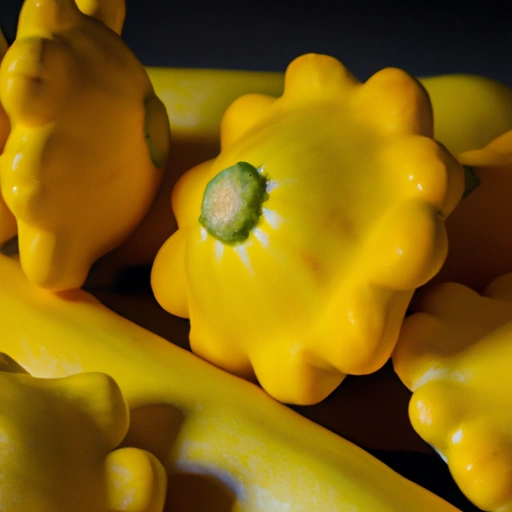Yellow Squash
Description

Yellow squash, also known as summer squash, is a versatile and tender vegetable that is cherished in kitchens worldwide. Its bright yellow exterior adds a splash of color to any dish, while its mild and slightly sweet flavor makes it a popular choice for a variety of recipes. Yellow squash is typically harvested when young and tender, ensuring a soft, edible rind and creamy white flesh that can be enjoyed in various culinary applications.
Common uses
Yellow squash is commonly used as a vegetable side dish, sliced and incorporated into salads, soups, stir-fries, and casseroles. It can also be grilled, roasted, or sautéed and serves as a healthy addition to sandwiches, wraps, and pasta dishes. Its delicate flavor and texture make it a favorite among chefs and home cooks alike.
Nutritional value
Calories
Yellow squash is low in calories, with approximately 18 calories per 100 grams or about 4.5 calories per ounce.
Protein
This vegetable provides about 1.2 grams of protein per 100 grams or roughly 0.03 grams per ounce.
Fat
It is low in fat, with less than 0.2 grams of fat per 100 grams or virtually 0 grams per ounce.
Carbohydrates
Containing around 3.4 grams of carbohydrates per 100 grams or about 0.1 grams per ounce, yellow squash is a low-carb option.
Vitamins
Yellow squash is a good source of Vitamin C and also contains Vitamin A, Vitamin B6, and other vitamins in smaller amounts.
Minerals
It offers essential minerals such as potassium, magnesium, and small amounts of iron and calcium.
Health benefits
With its high water content and low calorie count, yellow squash is a hydrating and weight-friendly food. The presence of vitamins and antioxidants supports immune health, while the fiber content aids in digestion. Potassium contributes to cardiovascular health, and the overall nutrient profile can help reduce the risk of chronic diseases when included as part of a balanced diet.
Potential risks
Yellow squash is generally safe for consumption, but those with allergies to cucurbits should avoid it. Additionally, consuming very large quantities might lead to excessive fiber intake, which could cause digestive discomfort for some individuals.
Common recipes
Yellow squash features in a variety of recipes such as ratatouille, squash casserole, and zucchini bread. It is also popular in vegetarian dishes and can be used as a low-carb substitute for pasta when spiralized into 'zoodles'.
Cooking methods
Common methods include grilling, roasting, steaming, and sautéing. It can also be hollowed out and stuffed or sliced thinly for use in raw dishes.
Pairing with other ingredients
Yellow squash pairs well with herbs like basil and oregano, cheeses such as parmesan and mozzarella, and proteins like chicken, beef, or tofu. It complements other vegetables like tomatoes, bell peppers, and onions.
Summary
Yellow squash is a nutritious and adaptable ingredient that fits into a myriad of recipes from various cuisines. Its historical significance, health benefits, and culinary versatility make it a beloved vegetable by many. Incorporating yellow squash into meals can add color, flavor, and nutritional value to a well-rounded diet.